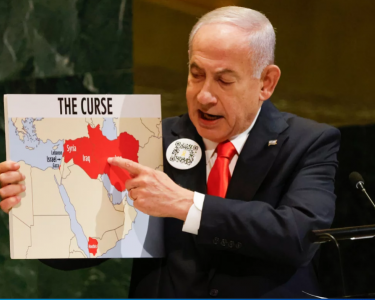BEIJING, April 26 (NNN- Xinhua) — President Xi Jinping said Friday that China will increase imports of goods and services on a larger scale.
China will further lower its tariff rates, Xi said in a keynote speech at the opening ceremony of the Second Belt and Road Forum for International Cooperation in Beijing.
He said the country would continuously open up its market and welcome quality products from around the world.
China is willing to import more competitive farm produces, finished products and services, he said.
CHINA TRADE INCREASE
A 21st century Silk Road, extending thousands of kilometers (8,000 km) by land and sea, transforming Asia’s economy and placing China in the center of a new scheme of economic globalization.
After the death of Chairman Mao Zedong, the “architect” as some people called Deng Xiaoping (1978 – 1989) became the main figure in China’s politics. As one of the country’s historic and paramount leaders, Deng initiated China’s economic reform process by launching the “four modernizations” program, breaking with preconceived ideas in regard to economic growth.
Yet throughout this period, China was led under one of Deng’s famous dictums which advised you to “hide your strength and bide your time.” Almost four decades later things have definitely changed. In 2013, Chinese President Xi Jinping presented the world an ambitious and far-reaching project, which would conclude Deng’s approach to geoeconomics and geopolitics.
A 21st century Silk Road, extending thousands of kilometers (8,000 km) by land and sea, could transform Asia’s economy and place China at the center of a new scheme of economic globalization. Known in Mandarin as Yi Dai Yi Lu – One Belt, One Road (OBOR) – the initiative is China’s time to reveal all their strength to the world.
Presented during a speech at a university in Kazakhstan, President Xi called for the creation of a “Silk Road Economic Belt,” later renamed OBOR or in the West as the Belt and Road initiative. The project is now one of Beijing’s three regional development plans, and in 2014 was officially incorporated into China’s national economic development strategy at the Central Economic Work Conference, the annual agenda-setting economic summit for policymakers.
“Over 2,000 years ago, our ancestors, trekking across vast steppes and deserts, opened the transcontinental passage connecting Asia, Europe, and Africa, known today as the Silk Road. … History is our best teacher. The glory of the ancient silk routes shows that geographical distance is not insurmountable,” China’s Xi Jinping said during the opening ceremony of the Belt and Road Forum for International Cooperation in 2017.
Now Xi’s main economic and foreign policy projects, it aims to strengthen infrastructure, trade, and investment links between the Asian giant and some 65 other countries that account collectively a combined Gross Domestic Product (GDP) of US$23 trillion per year about 30 percent of the global GDP, 62 percent of the population, and hold most of the major trade hubs for the world’s economy.
The initiative encompasses two main sections: one is called the “Silk Road Economic Belt” (the belt) and the other the “21st Century Maritime Silk Road” (the road). Be noted that the “road” is not actually a road but rather a sea route linking China’s southern coast to East Africa and the Mediterranean. While the “belt” is a series of overland corridors connecting China with Europe, India, Central Asia, Southeast Asia, and the Middle East.
The land passageways start in the central city of Xi’an, and its main ports are the northwestern capital city of Urumqi in the Uyghur autonomous region of Xinjiang, then it crosses into Kazakhstan to Almaty and Bishkek, Samarkand in Uzbekistan, Dushanbe in Tajikistan, Tehran in Iran, Istanbul in Turkey, Athens in Greece, Moscow in Russia, Duisburg in Germany to finally reach to biggest port hub of Europe in Rotterdam.
One of the flagship projects of it is the China-Pakistan Economic Corridor, which links Kashgar in Xinjiang with the Port of Gwadar, the project is estimated at US$46 billion and is currently underway. Another corridor starts in Xi’an and crosses all of Mongolia into Russia. A China-Southeast Asia corridor would unite China to Myanmar, Bangladesh, Thailand, and Indonesia; and those are just the land infrastructure projects
The project is essentially based on three particular key objectives: encouraging regional development through better integration in inland economies; upgrading Chinese industry while exporting Chinese standards; and addressing the problem of excess capacity.
The first goal is to reduce its national disparity, since the western regions of Xinjiang, Tibet, Qinghai, and Gansu are the four lowest-ranked provinces by economic indicators. The second will be based on Germany’s industrialization 4.0 strategy, which aims to a more innovation-driven economy rather than a manufacturing-focused industry.
“The government’s campaign to market its high-speed railway technology is perhaps the best example of how it intends to use OBOR to upgrade China’s industry. Many have dubbed Premier Li’s marketing effort in this area as ‘high-speed railway diplomacy’,” explains Lowy Institute researcher Peter Cai.
As these projects are underway, the French credit firm Euler Hermes estimates that between 2013 – 2018 saw US$460 billion invested, the maritime “road” is being configurated as well. The sea route corridors will begin in the port city of Fuzhou, stop in Guangzhou and Haikou, reach Hanoi in Vietnam, Jakarta in Indonesia and Kuala Lumpur in Malaysia, go up to Kolkata in India and down to Colombo in Sri Lanka, across the Indian Ocean towards Kenya, go up the Suez Canal into the Mediterranean and reach Athens and Venice in Italy.
“The initiative can transform the economic environment in which economies in the region operate. Regional cooperation on the new and improved transport infrastructure and policy reforms could substantially reduce trade costs and improve connectivity, leading to higher cross-border trade and investment and improved growth in the region,” the World Bank has described the project.
For this, China will use what has been dubbed as infrastructure development diplomacy, which is the creation of diplomatic and political ties through investment and loans in order to further build mega infrastructure projects inside the countries. Mainly done through institutions like the Chinese Development Bank (CDB) and the Export-Import Bank of China (EXIM). Many critics see this as some sort of Marshall Plan 2.0, in order to “trap” neighboring nations into China’s sphere of influence, as the U.S. did with17 European countries after World War II.
However, the Chinese have been very clear that it is nothing like the Marshall Plan, mainly because it lacks an ideologically motivated agenda but rather one that seeks to push free-trade, multilateral cooperation, and economic globalization. And while the lack of political rapport between China and some neighboring countries, as well as instability, security threats, and the U.S. interference are considerable obstacles, the project is well underway with no clear signs of backing down.
It would seem that Deng’s 1970s “hide and bide” is now long gone, giving way to China as a regional superplayer that wants the world to know.






